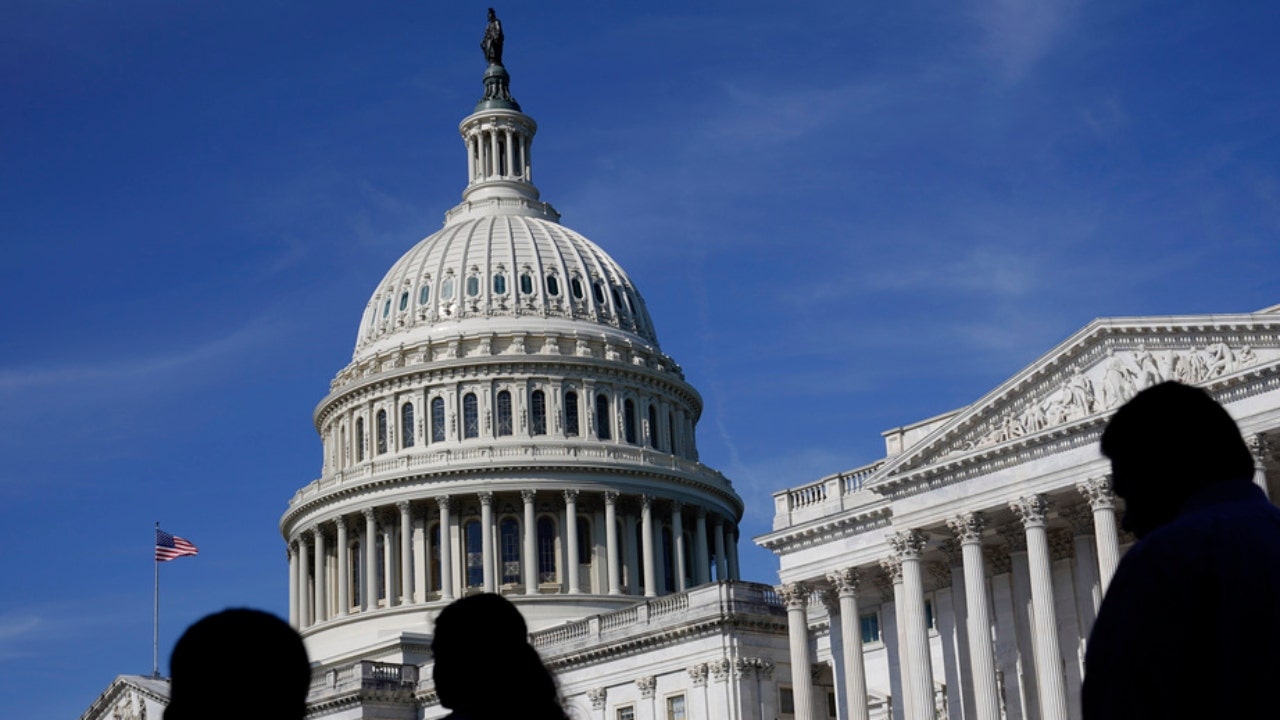The U.S. national debt topped $33 trillion for the first time ever on Monday, crossing a critical milestone at a time when government spending is already under scrutiny.
The national debt – which measures what the U.S. owes its creditors — hit $33.04 trillion as of Monday afternoon, according to new data published by the Treasury Department. By comparison, just four decades ago, the national debt hovered around $907 billion.
“The United States has hit a new milestone that no one will be proud of: our gross national debt just surpassed $33 trillion,” said Maya MacGuineas, the president of the Committee for a Responsible Federal Budget. “Debt held by the public, meanwhile, recently surpassed $26 trillion. We are becoming numb to these huge numbers, but it doesn’t make them any less dangerous.”
US NATIONAL DEBT TRACKER: SEE HOW MUCH THE GOVERNMENT OBLIGATIONS COST
The historic debt level comes as Congress races to avert a government shutdown at the end of September.
House Republicans unveiled a short-term plan late Sunday to that would temporarily fund the government through Oct. 31. The short-term measure – known as a continuing resolution – would impose an 8% spending cut on federal agencies, excluding funding for defense, veterans affairs and disaster relief.
It was sponsored by members of the conservative House Freedom Caucus and the more moderate Main Street Caucus. However, the measure already ran into GOP opposition, raising the stakes of another down-to-the-wire showdown on Capitol Hill.
HOW DOES BIPARTISAN BUDGET, DEBT LIMIT DEAL IMPACT SPENDING, DEFICIT?
“As lawmakers drift from one short-term fiscal crisis to the next, our national debt just keeps piling up, trillion after trillion,” said Michael Peterson, CEO of the Peter G. Peterson Foundation. “After the debt ceiling showdown in June, we crossed the $32 trillion debt milestone. Now, as we stare down a potential government shutdown just three months later, we have raced past $33 trillion in red ink.”
The latest findings from the Congressional Budget Office indicate that the national debt will nearly double in size over the next three decades. At the end of 2022, the national debt grew to about 97% of gross domestic product. Under current law, that figure is expected to skyrocket to 181% at the end of 2053 — a debt burden that will far exceed any previous level.
Even more worrisome is that the spike in interest rates over the past year and a half has made the cost of servicing the national debt more expensive.
That is because as interest rates rise, the federal government’s borrowing costs on its debt will also increase. In fact, interest payments on the national debt are projected to be the fastest-growing part of the federal budget over the next three decades, according to the CRFB.
Payments are expected to triple from nearly $475 billion in fiscal year 2022 to a stunning $1.4 trillion in 2032. By 2053, the interest payments are projected to surge to $5.4 trillion. To put that into perspective, that will be more than the U.S. spends on Social Security, Medicare, Medicaid and all other mandatory and discretionary spending programs.
“As we have seen with recent growth in inflation and interest rates, the cost of debt can mount suddenly and rapidly,” Peterson said. “With more than $10 trillion of interest costs over the next decade, this compounding fiscal cycle will only continue to do damage to our kids and grandkids.”
Read the full article here













Leave a Reply